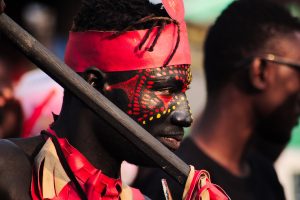Introduction
The following article tells the story of an external project NHTV conducted at museums and heritage sites related to the painter Vincent van Gogh. This research was conducted by TDM Master lecturers Wesley Put and Ondrej Mitas and alumni Joris Dibbits, Sven Freerks and Bernadett Papp, as well as current and former bachelor students Amelie Bouchenot, Cita van den Heuvel, and Joost Heijningen. This project reflects the expertise and attention to detail we take pride in.
The legacy of Vincent van Gogh is enormous. His masterpieces have inspired numerous artists and his role in shaping the world of art is indisputable. In 2012 the Van Gogh heritage locations in France, Belgium and The Netherlands have decided to come together to form an efficient collaboration. The Van Gogh Europe Project was inaugurated after receiving funds from the European Union. The NHTV Breda University of Applied Sciences was in charge of conducting extensive market research with the aim of providing market intelligence that serves as a basis for product development, packaging, marketing and promotional strategies and cross-selling of Van Gogh sites.
After having defined eight target markets, secondary research was used to identify main trends in inbound tourism to Belgium, France and the Netherlands. The research continued with in-depth field research focusing on the interests, expectations and experiences of visitors. A threestep approach was used: a large-scale visitor surveys, in-depth interviews with a small sub-sample of the survey respondents, and social media analysis. Field research was conducted in The Netherlands at the Van Gogh Museum in Amsterdam and the Vincentre Museum in Nuenen. In Belgium we conducted research at the Maison Van Gogh in Cuesmes. In France we conducted research at the Musée d’Orsay in Paris, the Auberge Ravoux in Auvers-sur-Oise, and at St. Paul-de-Mausole and Musée Estrine in St. Rémy-de-Provence.
We used a systematic diversity sampling approach. Responses were collected at different times of the day, three different days per week, over a period of four weeks. After having collected 1,844 responses the data was analysed in two steps. First, responses were analysed by using descriptive statistics. Second, complex linear models were built to predict relevant behaviour. In parallel with the visitor survey, social media analysis was carried out. For a period of 7 weeks, Facebook, Twitter, Pinterest, Instagram, and other platforms were monitored to analyse tags, phrases, and visual content linked to Van Gogh and the Van Gogh locations. In total, 32,591 messages were analysed. The last step of the multi-method approach was in-depth interviews. Fifteen interviews were conducted and transcribed. The transcripts were analysed using a deductive coding approach, whereby quotes from the interviews were grouped into pre-determined concepts.
The majority of the survey data were collected at Musée d’Orsay (28.04%) and the Van Gogh Museum Amsterdam (40.11%). Most respondents came from the US (22.525), France (16.89%) and The Netherlands (9.09%). The overall sample can best be characterized as young, independent, and well-educated. A large majority, 81.92%, of the respondents organized most of the trip themselves. Of these free independent tourists, 25.73%, travelled with friends and 31.03% as couples without children. These proportions are directly related to the overrepresentation of Generation Y and Baby Boomers in the dataset.
Positive emotions such as interest, joy, positive surprise, inspiration, and fascination were felt strongly by most of the respondents. Visitors that strongly agreed with the following experience elements usually had high intent to recommend: I experienced something unique, I visited a place I really wanted to go, I had an experience which exceeded my expectations, I learned a lot. Overall most of the respondents were very positive about their visitor experience. “Interest” was rated as the strongest emotion in case of all the locations. Especially Musée d’Orsay was considered as a unique place that visitors had on their bucket lists and as an experience that exceeded their expectations. Interviewees described their visits to Van Gogh sites as fascinating and intensely positive, although they also mentioned there was a lack of information and some confusion. In some cases, signs leading to the attractions were missing as well as information materials, audio guides, and translations, negatively impacting the visitor experience.
In contract to being very interested in Van Gogh, most of the survey respondents are not familiar with the smaller locations and even if they heard of them, they don’t intend to visit these sites in the next two years. An interesting finding was that the level of awareness and knowledge was directly related to the intention to visit other Van Gogh locations in the future. Visitors who had more information about Van Gogh were more likely to visit related sites.
The analysis revealed almost no interest in organized package tours. Travellers prefer to organize the trip themselves. Furthermore, Van Gogh locations are seen as attractions and not as destinations. A visit to a Van Gogh site is often connected to other activities. The social media analysis revealed that the Van Gogh locations were described as the place where the paintings were made, and not as a destination that can or has been visited.
The respondents showed no or minimal interest in long-distance Van Gogh themed tours and would rather visit Van Gogh sites that are located nearby.
The main conclusion is that the level of familiarity with the sites is extremely low. Visitors are aware that the paintings were made at certain locations but they are not aware these places can be visited. The attractions have a substantial responsibility in spreading information about other Van Gogh locations. The Van Gogh Museum Amsterdam and Musée d’Orsay have a vital role: They can increase awareness for the smaller sites. The active online presence of The Van Gogh Museum Amsterdam offers potential for promoting the Van Gogh Europe Network. Tours that combine several cultural attractions (e.g. related to other painters) offer great potential, as most of the respondents were interested in combining visits to Van Gogh locations with other activities.
The research revealed that both online and offline information is crucial. A new and informative website, connecting the locations by providing all the information needed to create an itinerary, is highly recommended. Visualization of the locations and possible routes would make it easier for the visitors to design their own trip. Developing a Van Gogh Europe app is also recommended, as the visitors tend to search for information over mobile internet while on their holiday. Finally, optimal use needs to be made of existing online social media network of signature attractions, such as The Van Gogh Museum in Amsterdam.
Besides providing off-site information, on-site information is just as important, including flyers, maps and other printed materials. Visitor information should be examined critically with attention to translation in several languages, audio guides, signs, information regarding e-tickets, and waiting times.
This research has highlighted important aspects of cultural tourism, specifically the possibility to develop cross-border tourism between European countries. Besides that, the analysis showed that selling Van Gogh themed tours in travel packages is not likely to be successful. Crucial in developing and promoting Van Gogh sites is adapting to the travel behaviour, individual needs, and preferences of travellers and raising knowledge and awareness linked to Van Gogh. Finally, close collaboration between the members of the Van Gogh Europe network is needed for longterm success.





